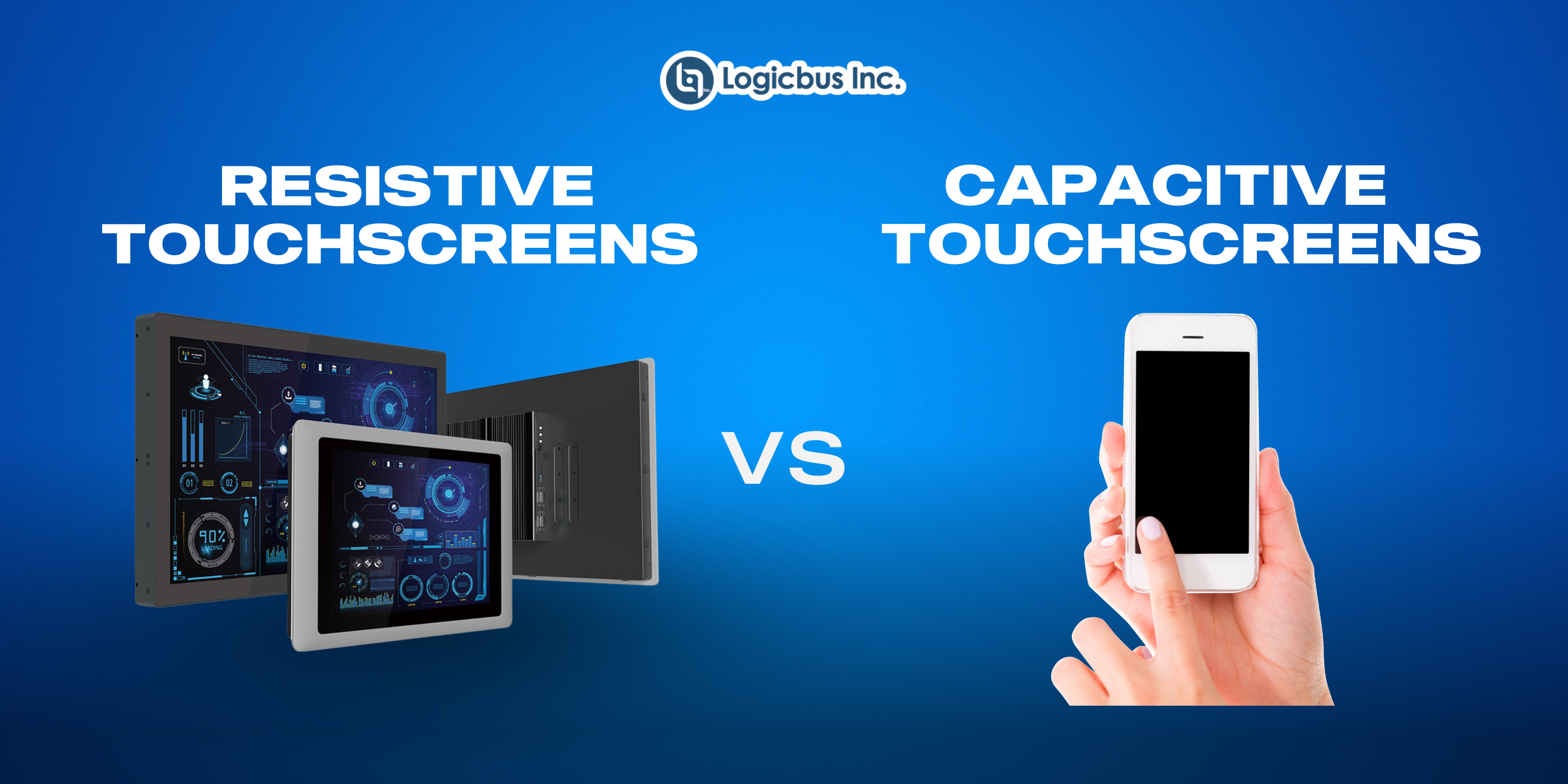Capacitive Touchscreens:
Operation: They use an electrostatic field generated by human touch to detect the location of the touch.
Advantages:
- Higher accuracy and sensitivity to touch.
- Support for multi-touch gestures.
- Increased durability and scratch resistance.
- Sleeker and slimmer design.

Disadvantages:
- Higher cost compared to resistive screens.
- Do not work with gloves or non-conductive tools.
- Susceptible to electromagnetic interference.
Resistive Touchscreens:
Operation: They work by applying pressure on a flexible membrane that separates two conductive layers.
Advantages:
- Lower cost than capacitive screens.
- Work with gloves or non-conductive tools.
- More resistant to weather and harsh environments.
Disadvantages:
- Lower accuracy and sensitivity to touch.
- Do not support multi-touch gestures.
- More susceptible to damage from sharp objects.
- Less aesthetic and bulkier design.

Which to Choose for Industrial Environments?
The best option will depend on the specific needs of your application.
Capacitive Touchscreens:
Recommended for:
- Controlled environments where precision and sensitivity are crucial.
- Applications that require multi-touch gestures.
- Interfaces where aesthetics and design are important.
Resistive Touchscreens:
Recommended for:
- Harsh environments with dust, moisture, or vibration.
- Applications where gloves or tools are required.
- Tight budgets where cost-effectiveness is a key factor.
Additional Considerations:
Brightness and contrast: Important for good visibility in bright environments.
IP protection rating: Protects against dust, water, and other elements.
Operating temperature: Ensures functionality in extreme conditions.
Size and resolution: Adaptable to the needs of the application.
Conclusion:
Choosing the right touchscreen technology for your industrial environment is essential to optimize efficiency, productivity, and cost-effectiveness. Analyze the characteristics of each type, the needs of your application, and the additional considerations to make the best decision.




sales@logicbus.com | support@logicbus.com | +1 619 616 7350 | Start conversation

